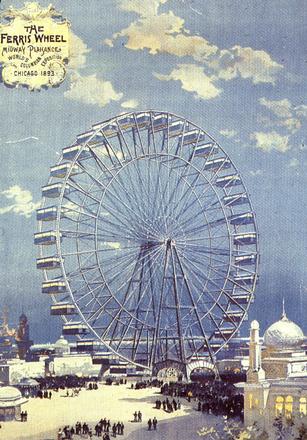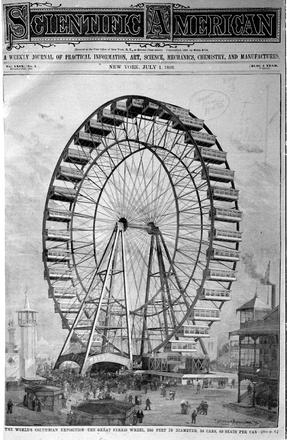 |
 |
The Ferris Wheel was the engineering highlight of the exposition and one of the most pervasive, lasting influences of the 1893 fair. The Ferris Wheel was Chicago's answer to the Eiffel Tower, the landmark of the 1889 Paris exhibition. The wheel was created by Pittsburgh, Pennsylvania bridge builder George W. Ferris. Supported by two 140 foot steel towers, its 45 foot axle was the largest single piece of forged steel at the time in the world. The wheel itself had a diameter of 250 feet, a circumference of 825 feet, and the maximum height was 264 feet. It was powered by two 1000 horsepower reversible engines. It had 36 wooden cars that could each hold 60 people. The Ferris Wheel grossed $726,805.50 during its short time in operation, at 50 cents per ride. The profit of approx. $300,000 was of great benefit toward balancing the books of the exposition. The wheel was dismantled in mid-1894, after the fair, and reused at the St. Louis exposition in 1904. The original Ferris Wheel was scrapped in 1906. But, the influence of the engineering and entertainment marvel can be readily seen by the large number of Ferris Wheels of various types at fairs and entertainment grounds around the world. -- Bruce R. Schulman